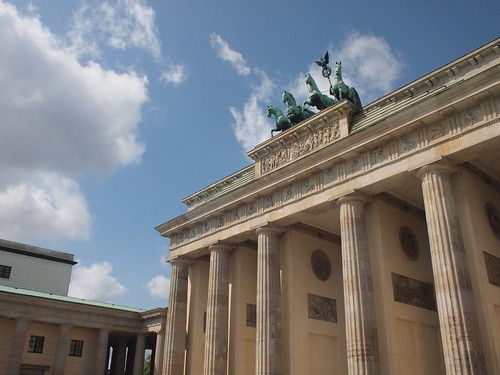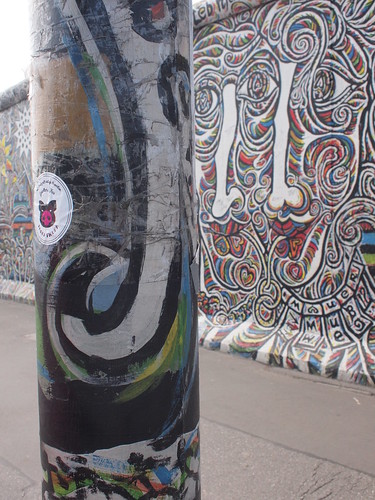
After my first full day in Berlin, all I could think was that this was a
proper city. My second day, I could articulate it a little better: unlike Prague, unlike Vienna, my experience of Berlin was one where the city's past didn't overshadow its present. Which is saying something, because it's not like Berlin is lacking for history. And I spent one day with the history, with the monuments and memorials; I spent my second day riding the subway (u-bahn) and walking Berlin's neighborhoods until my feet were sore. It was not enough time, really, but I am increasingly convinced that there's an entire trip composed of the things I didn't do on this one, and--well, that's another trip.
'The Lives of the Others' (
Das Leben der Anderen) is a very good movie, made remarkable by Ulrich Mühe's lead performance as a Stasi officer in East Berlin. I saw it for the first time in 2006, when it came out, with my college German class. I've seen it at least twice more since then. Although I'm aware of German history in the way a lot of people are--it does, after all, interface with world history rather significantly--that movie was my inroad to the history of living in Berlin. It's also a reminder that Berlin's history is not always something that Germany wants to celebrate. Which is not to say it's hidden in the city as it exists today. The Memorial to the Murdered Jews of Europe is right behind the Brandenburg Gate; a memorial for the Nazi book burnings sits where it happened, in the central Bebelplatz. You can look down through a piece of glass into a sealed room lined with empty bookcases.

But consider New York City, or any of the world's major cities--New York has history, surely, but that's not why people go there. They go there for culture, vitality, for what the city is
now. Berlin feels like that. The memorials to the past are there, but the city isn't so enamored with its past that the present is overshadowed. A good illustration might be the East Side Gallery: a swath of the Berlin wall, with commissioned murals lining its east side. History, painted over with something new and present. I started there before I explored the neighborhood of Kreuzberg, where I walked where the wall once stood, along canals and through parks, past neighborhood döner shops, graffiti plastered train stations, kiosks selling newspapers, bicyclists whizzing past in their red-painted lanes. And people--so many people. In my last post I mentioned that Berlin is one of the most visited cities in Europe, but most of the time you could hardly tell, because the tourists disappeared into the millions of people who actually live there.
So that was Berlin, then: a proper city, sprawling and vital. A bit gritty. Complicated public transit system. International. 'Arm, aber sexy' (Poor, but sexy) its mayor said in 2004. 'Ich bin ein Berliner,' JFK said in 1963. According to my German instructor, he was trying to say he was a citizen of Berlin, but he actually said he was a jelly donut. According to Wikipedia, that's not true, so I'll have to throw that piece of trivia out. And I thought it made such a good conclusion, too.





No comments:
Post a Comment